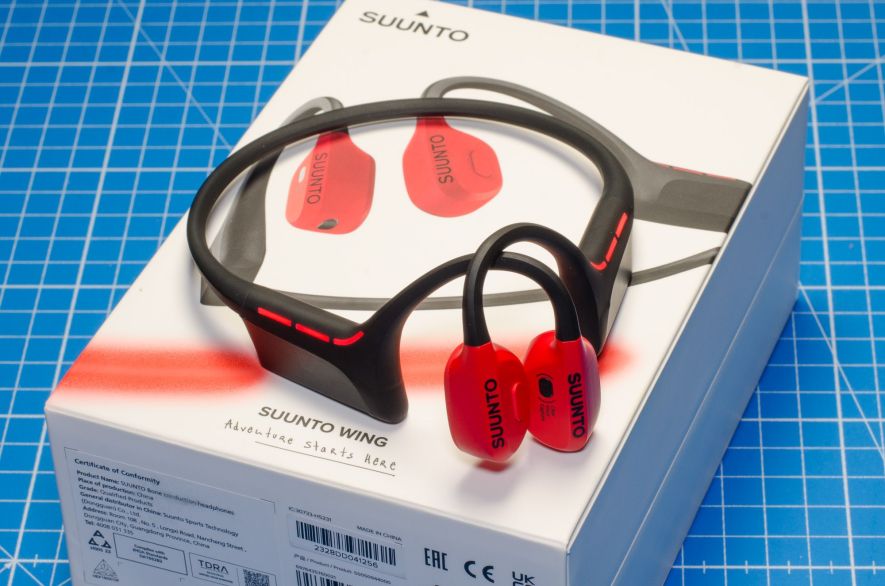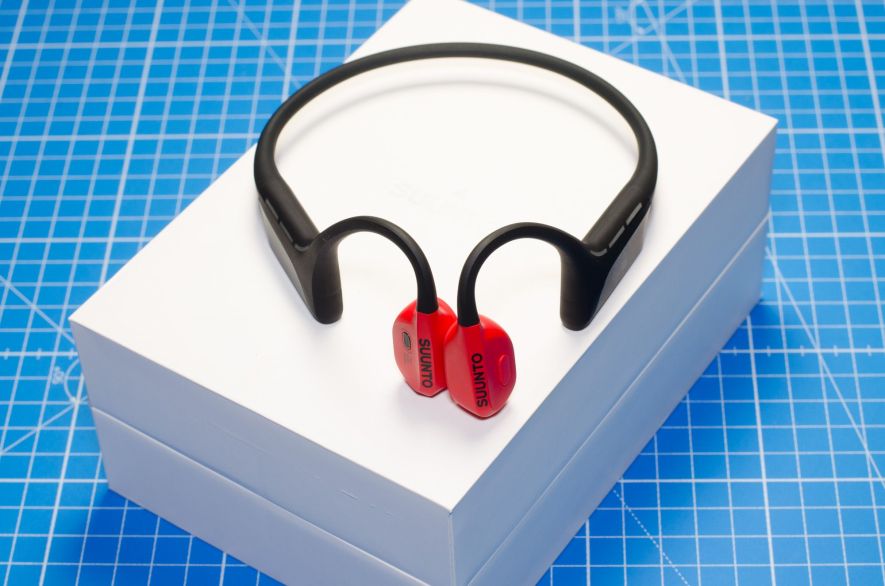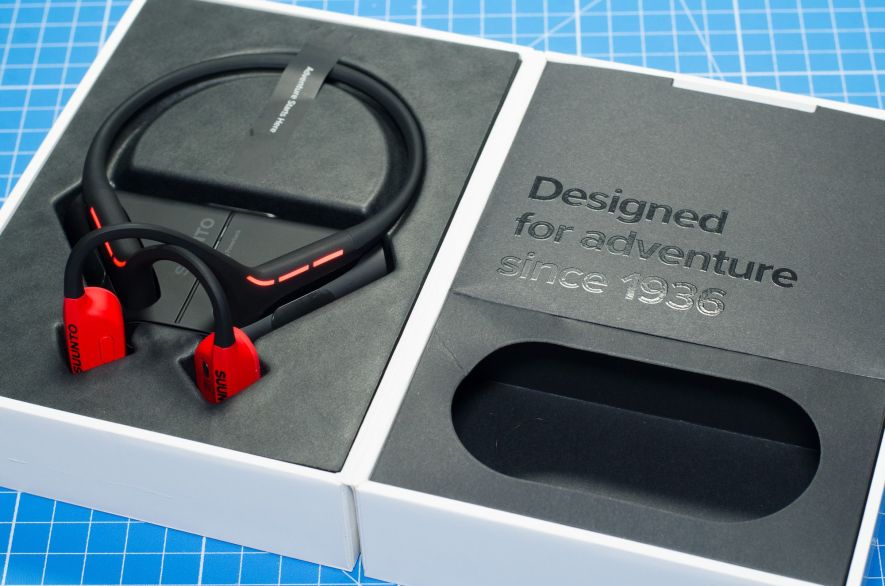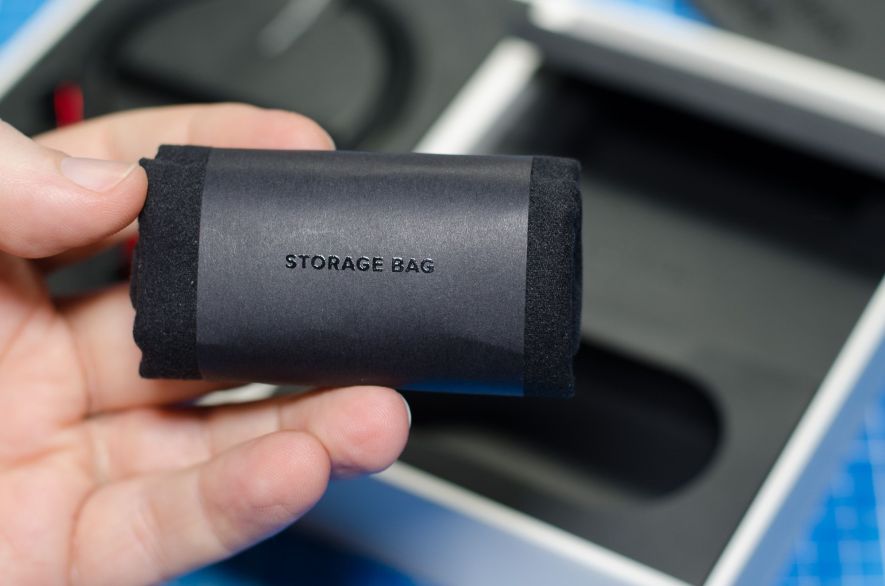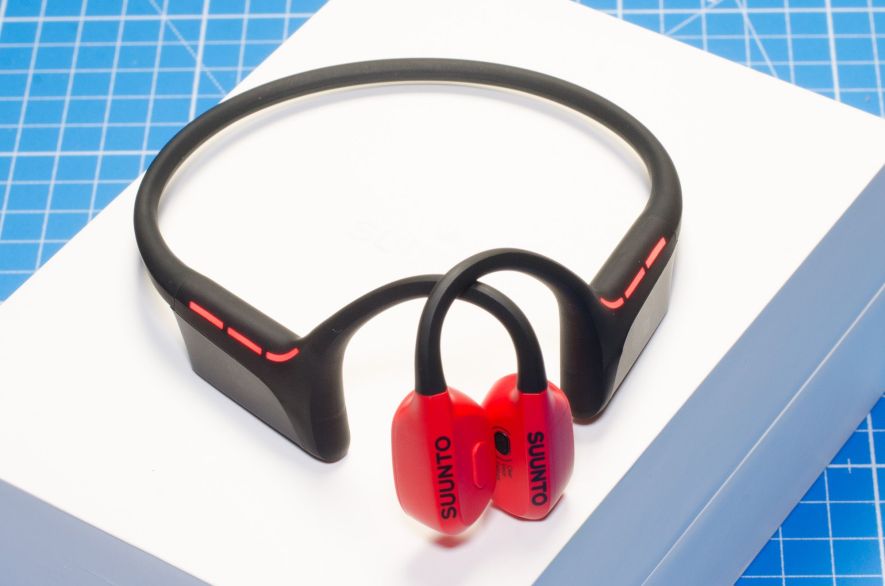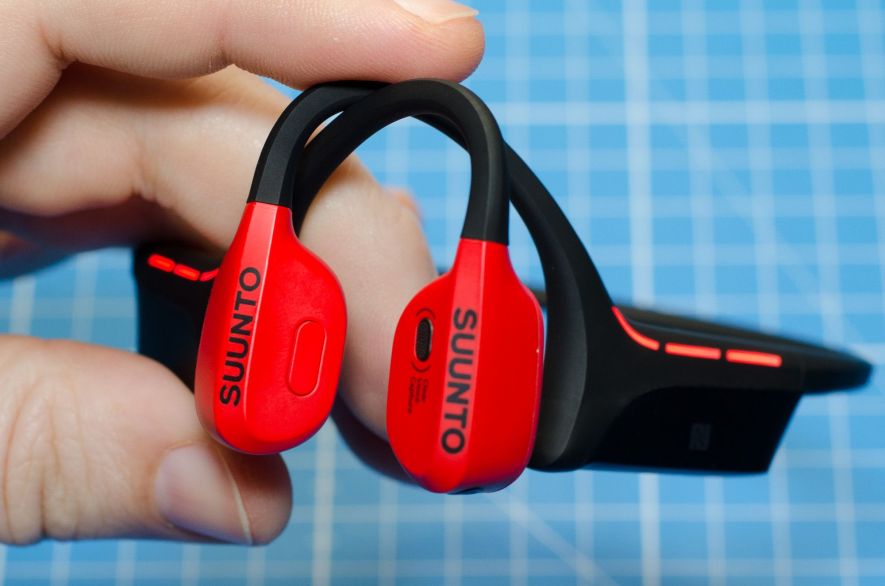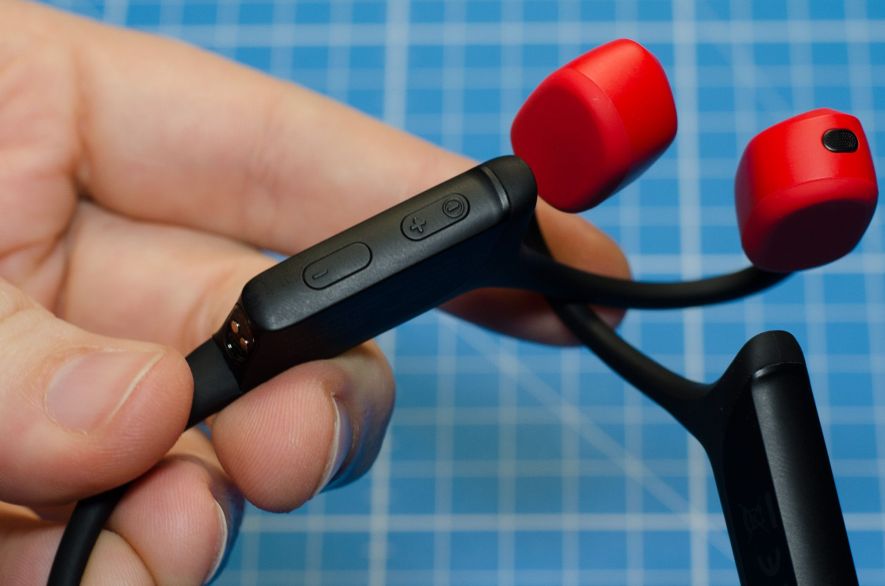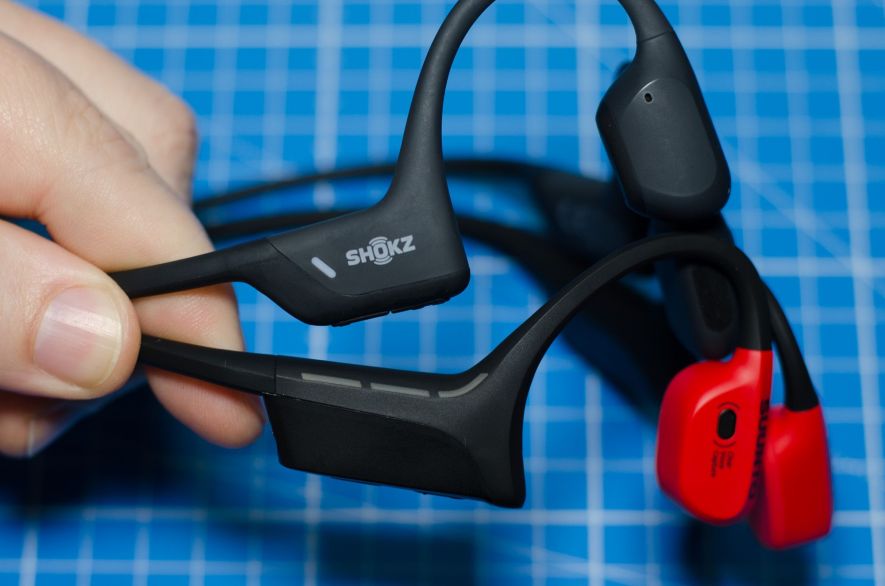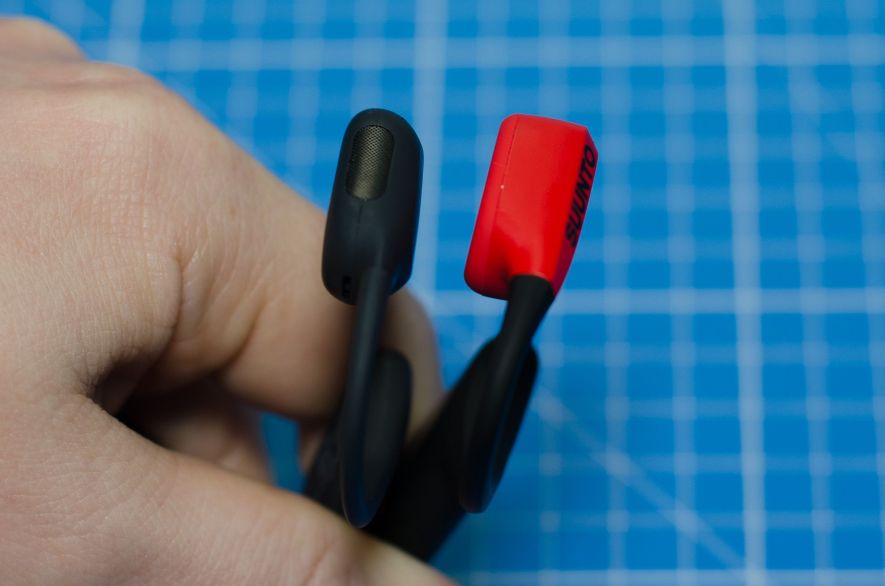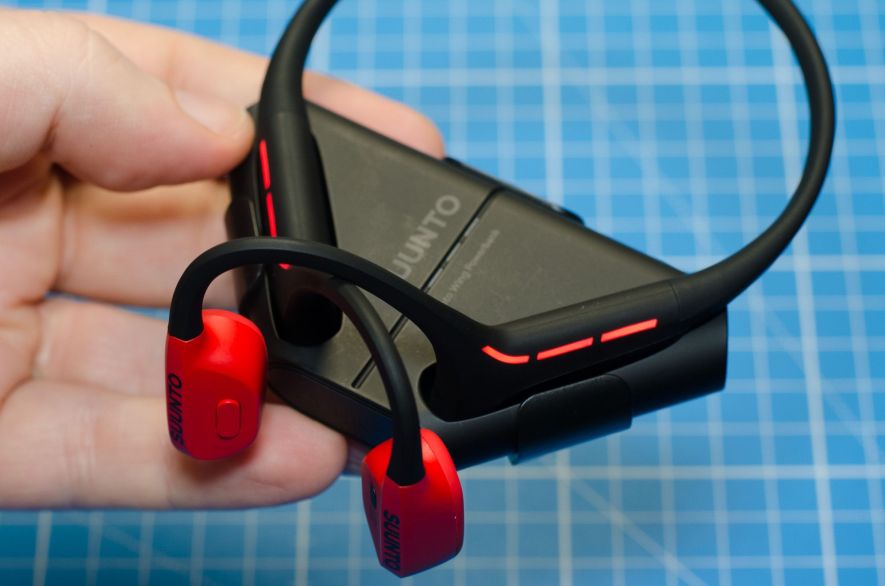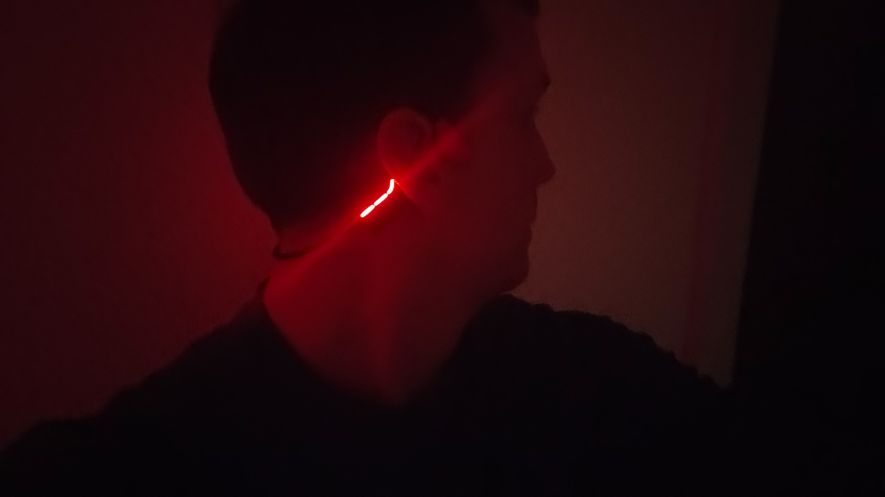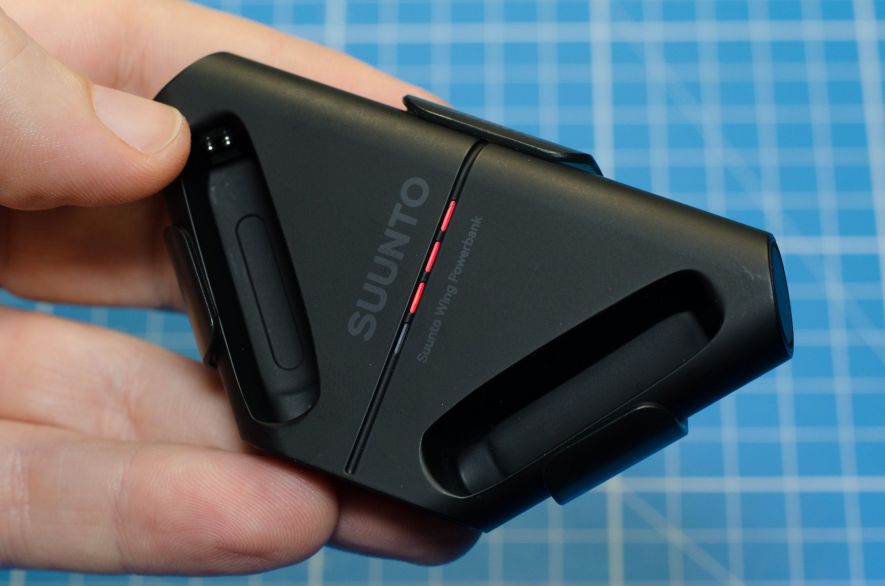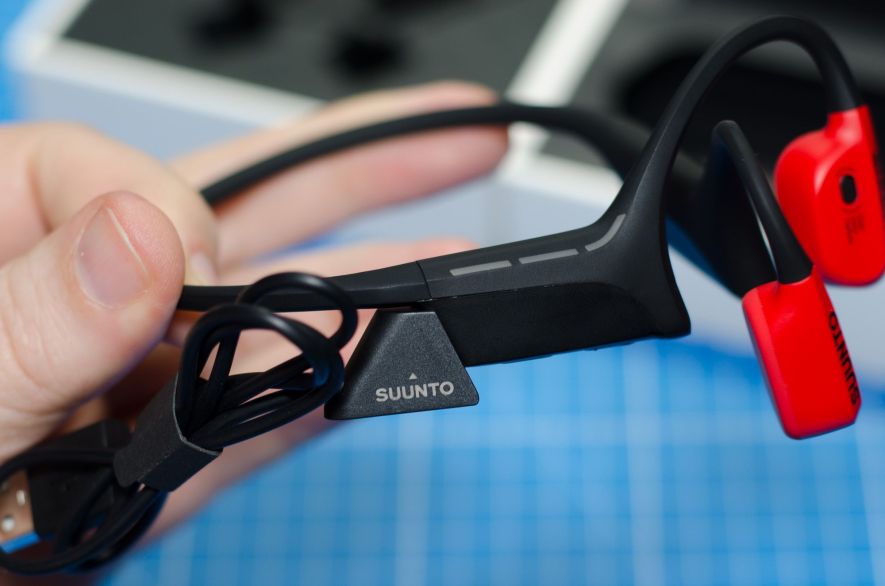Suunto Wing Review – Sound through bone conduction
Suunto unveiled a sports headphone – a news that I first considered as an April Fool’s joke. However, the Suunto Wing is a reality and it’s a headphone that utilizes bone conduction technology. I had the opportunity to test and review it.
In a bold departure from their traditional focus on sports diving devices and rugged outdoor sports watches, Finnish company Suunto has surprisingly ventured into the realm of audio technology. The latest addition marks a significant leap into uncharted territory for the renowned brand.
In this article, I will explore the features, design, and performance of the Suunto Wing, delving into how they stand out from the competition and what sets them apart from traditional sport headphones.
Bone Conduction – What is it?
What makes the Suunto Wing special is certainly the bone conduction technology, where sound doesn’t reach the inner ear through the air and eardrum, but rather conjures music into the ears via the cheekbones.
For this, so-called transducers are placed in front of the ears and transmit the sounds through vibrations to the bones.
The major advantage of this is that the headphones don’t exclude environmental sound, as is the case with in-ear or over-ear headphones. This allows the users to continue perceiving their surroundings, and even engage in conversations seamlessly.
Unboxing and First Impression
Suunto packages the Wing in an attractive, white box reminiscent in size of a thick paperback book.
Pictures speak louder than a thousand words, so it’s best to see for yourself.
Once unfolded, the headphones can be found on the left side, already placed in the small power bank, which is also part of the overall package.
In the other half of the packaging, there’s a storage pouch, a USB charging cable, a pair of earplugs, and the obligatory printed materials (warranty and safety instructions, quick guide).
First Impression
Visually, the Suunto Wing closely resembles the OpenRun Pro by Shokz. Shokz is indeed the pioneer, and almost all bone conduction headphones currently exhibit the design of the forefather of this headphone technology.
However, the Suunto Wing speaks its own language, as the transducers come in a sleek, sporty red color.
The fact that the company name is also written on them appeals to me, but I’m easily impressed by such details.
At 33 grams, the headphones are naturally lightweight.
The craftsmanship leaves a very high-quality impression. There’s simply nothing to complain about. Gaps are so minimal that there’s hardly anything to write about here.
Compared to the Shokz OpenRun Pro, both the transducers and the electronic unit behind the ear are slightly larger. However, this is not noticeable in everyday use.
Thanks to its solid construction, the Suunto Wing is IP67 water and dust resistant, making it resistant to sweat as well.
Comfort
And the comfort? It’s high and strongly reminiscent of the Shokz models here too, meaning the headphones sit almost imperceptibly on the ears. Even with sunglasses and a bicycle helmet, the Suunto Wing fits easily on the head. A bit of practice for the “right” fit and especially the sequence of when to put on what, everyone has to figure out for themselves.
It gets a little trickier in winter when hats are supposed to keep the head and ears warm. It’s still doable, but with some minor compromises – either in comfort or the temperature of the ears.
If there’s something noticeable, it’s the fairly generously sized band that connects the transducers and the technology behind the head. But this ensures that it definitely fits on every head.
First Steps and Features
There usually isn’t much to say about setting up a headphone, and that’s also the case with the Suunto Wing: Pairing mode is initiated with a button press, so that a smartphone, tablet or watch and the headphones quickly find each other.
Even faster is NFC, because then the Suunto Wing only needs to be held near the NFC-enabled device (e.g., smartphone or tablet). The devices recognize the headphones and automatically ask if they should be paired.
Otherwise, it’s just a matter of getting familiar with the operation of the Suunto Wing. There’s not much to learn there:
| Action | Context | Button | Result |
|---|---|---|---|
| 1x press | audio playback | multifunction button | play / pause |
| 2x press | audio playback | multifunction button | next track |
| 3x press | audio playback | multifunction button | previous track |
| 1x press (long) | - | multifunction button | LED on / off |
| 1x press | call | multifunction button | answer / reject call |
Control with Head Movement
Even easier and particularly suitable for sports is control via head movement. Although this feature needs to be activated and drains the battery a bit faster, it allows you to skip to the next track or answer a call with a simple nod of the head.
If you’re not in the mood or too out of breath for a phone call, all you need to do is shake your head.
It’s a cool feature that I missed on the Shokz models. However, it takes a bit of getting used to performing the movement correctly. It has to be executed very clearly and cleanly – a bit like checking the mirrors during a driving test.
After a bit of practice, it works mostly problem-free and is a real asset when your hands aren’t free or you don’t want to fumble with your smartphone or watch while exercising.
Light Strips for Increased Visibility
Another unique feature is the three red LEDs that Suunto has installed on both sides of the headphones, which can be turned on and off with the press of a button.
To enhance visibility even further, you can switch from continuous lighting to blinking, offered with various intervals.
Although the solution itself is good, the LEDs could have been a bit brighter. For my sense of security, I also attach a light to my hat or a glowing band to my arm.
Phone Calls with the Suunto Wing
For me, phone calls aren’t the primary function of bone conduction headphones, but thanks to the built-in microphone, even phone calls work with the Suunto Wing when paired with a phone.
To ensure you don’t miss any calls, the headphones offer two different ring modes – a normal one for quieter environments and a louder one for when you don’t want to miss a call.
Up to 30 km/h, the Suunto Wing should also be able to suppress wind noise while cycling, although you won’t notice much of it yourself.
Areas of Use and Sound Quality
Normally, sound quality essentially determines the quality of headphones. With bone conduction headphones, I wanted to make an exception because sound quality is deliberately sacrificed for safety. Because this goes hand in hand with the area of use, I’ll share my assessment of both points here together.
Sound Quality
Let’s start with sound quality: Anyone who puts on bone conduction headphones and expects a performance similar to that of in-ear or over-ear headphones will be disappointed.
Objectively speaking, the Suunto Wing (and all other bone conduction headphones) fail to deliver the depth of sound that in-ear and over-ear headphones offer. The reasons are varied, but the most significant is the lack of shielding from ambient noise.
For this purpose, Suunto also includes the two earplugs. Once inserted into the ear (alternatively, your fingers can do the job), even tones a few octaves lower are perceived.
I didn’t notice any weakness in the midrange and treble with the Suunto Wing. However, the declining bass range makes the overall sound rather flat.
Areas of Use
But, and this is a big but: Here, you’re consciously trading musical quality for safety. Even someone who has only jogged in the forest with music playing through in-ear or over-ear headphones knows the horror of an overtaking cyclist.
I don’t think I need to describe situations in traffic here. Everyone knows that ears must remain free if you value your own health.
And that’s exactly where the Suunto Wing with bone conduction technology comes in: Hearing remains open to ambient noises. You’ll notice an approaching car just as much as a bicycle bell.
And let’s be honest: When I’m out exercising, I need music for entertainment, not for audiophile enjoyment. For podcasts, audio dramas, and beats for motivation, the Suunto Wing is fantastic.
For pure musical enjoyment with fine detailing and stage presentation, there are better products and places.
Battery Life
Suunto states that the battery life of the Wing can last up to 10 hours on a full charge. However, the test period was not sufficient to fully deplete the battery.
If the battery does run low, the small and lightweight power bank can provide the headphones with up to two additional full charges.
And apparently, for me and many others who tend to forget to charge their devices in time, the fast charging mechanism can provide the battery with enough energy for up to three hours of runtime after just 10 minutes of charging. If necessary, power can also be supplied directly to the headphones via the USB cable.
I believe these are dimensions that should be sufficient for the vast majority of users.
Suunto Wing - Verdict

Controlling the phones via head movement may not be a feature used daily, but it’s a great addition for those who don’t want or can’t use their hands. The LED lights are likely to be used much more, especially in autumn and winter.
And the sound? It’s great for headphones that offer so much safety. It may not be Dolby standard, but it’s more than sufficient for sports.
At 199 €, the Suunto Wing are slightly more expensive than the Shokz OpenRun Pro. However, the price is justified for the additional features, and it’s up to each individual whether they want to pay the extra 20 € for those features.
I can highly recommend both the Suunto Wing and the Shokz OpenRun Pro to everyone.
One more thing...
Can you imagine that this is a privately-run website? There's no office or editorial staff here, just me with a lot of passion and motivation to provide information, reviews, and news in a manner that large online magazines simply can't match. Even if English is not my first language, I hope you found this article useful.
If you'd like to support this website or show appreciation for my work, please leave a comment, share a link, or use the Amazon link to buy anything (it doesn't have to be related to the subject of this article). It would be much appreciated and will support this website.

